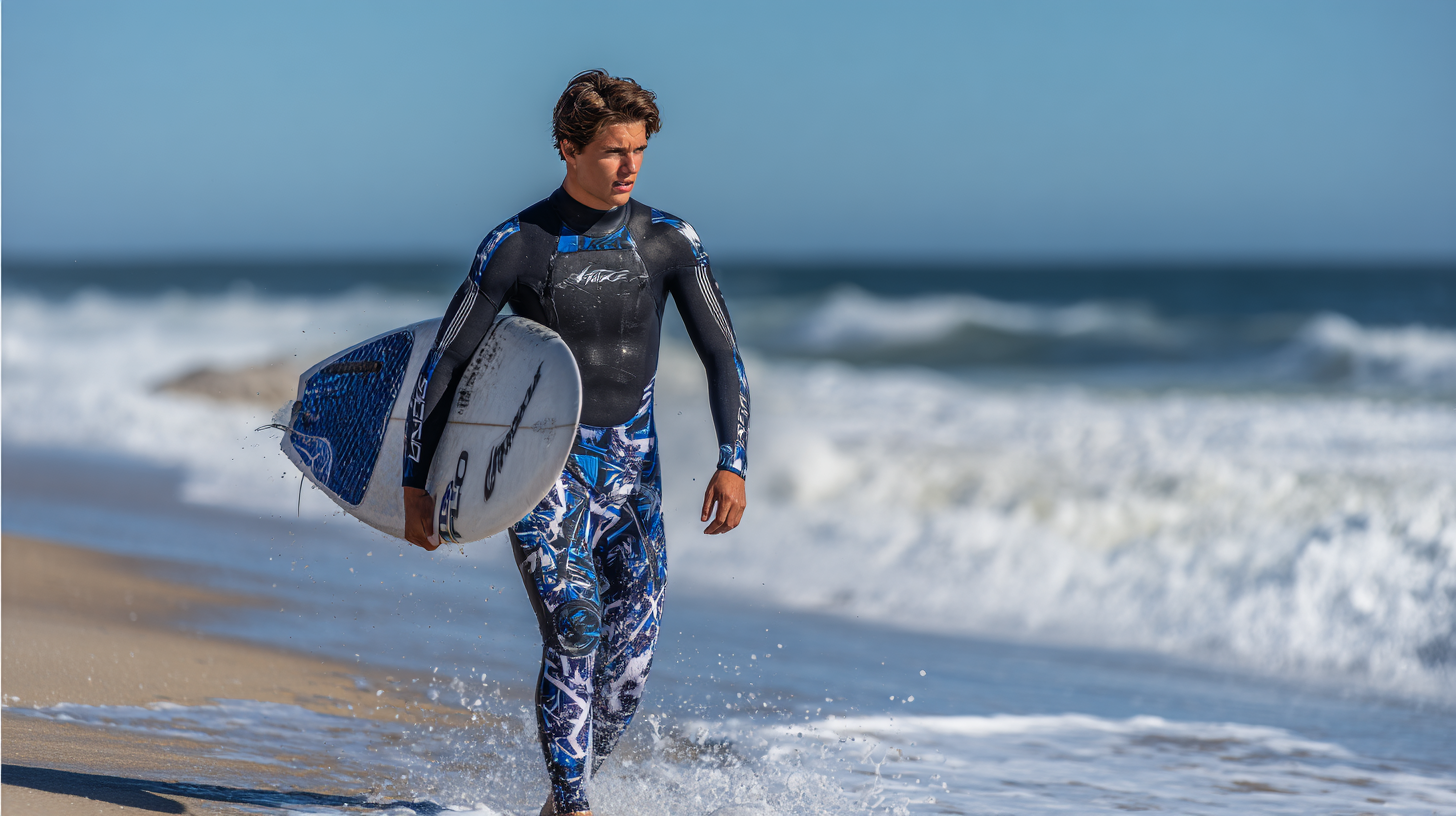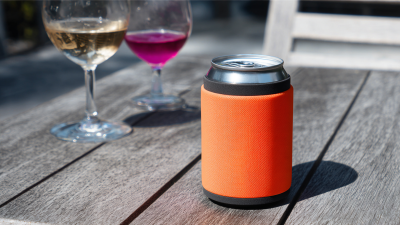 Choosing the right surfing suits material is crucial for enhancing performance and ensuring comfort in the water. According to a recent report from the Surf Industry Manufacturers Association, approximately 60% of surfers consider the material of their wetsuits as a key factor influencing their overall experience, emphasizing the importance of quality in surf apparel. With advancements in textile technology, modern surfing suits now utilize a variety of materials designed to provide optimal insulation, flexibility, and durability.
For instance, neoprene remains the most popular choice due to its excellent thermal properties, while eco-friendly alternatives like Yulex are gaining traction among environmentally conscious surfers. This guide aims to equip you with the knowledge needed to navigate the diverse options available, allowing you to make informed decisions that maximize both your performance and comfort on the waves.
Choosing the right surfing suits material is crucial for enhancing performance and ensuring comfort in the water. According to a recent report from the Surf Industry Manufacturers Association, approximately 60% of surfers consider the material of their wetsuits as a key factor influencing their overall experience, emphasizing the importance of quality in surf apparel. With advancements in textile technology, modern surfing suits now utilize a variety of materials designed to provide optimal insulation, flexibility, and durability.
For instance, neoprene remains the most popular choice due to its excellent thermal properties, while eco-friendly alternatives like Yulex are gaining traction among environmentally conscious surfers. This guide aims to equip you with the knowledge needed to navigate the diverse options available, allowing you to make informed decisions that maximize both your performance and comfort on the waves.
When it comes to choosing the right surfing suit material, understanding the properties of various materials is crucial for optimizing both performance and comfort.
The most popular material, neoprene, is a synthetic rubber known for its excellent insulation properties. It works by trapping a thin layer of water between the suit and the skin, which is then warmed by body heat. A study highlighted that neoprene suits can delay heat loss significantly in cold environments, making them indispensable for surfers tackling chilly waters.
Another exciting development in surf suit materials is buoyant cotton fabric, which researchers have recently engineered to resist water absorption. This material not only enhances buoyancy but also provides greater comfort, potentially revolutionizing how surfers experience the water. Furthermore, innovations like "furry" wetsuits inspired by sea otters demonstrate how the industry continues to explore new frontiers in thermal efficiency and comfort.
Tips:
When selecting a wetsuit, consider the thickness of the neoprene based on water temperature—typically, a 3/2 mm suit is ideal for moderate temperatures, while thicker suits are essential for colder conditions. Additionally, ensure a snug fit to enhance thermal retention and reduce water influx. Don’t overlook newer materials that provide excellent buoyancy and comfort, as these advances can enhance your surfing experience.
 When selecting the right surfing suit material, it's crucial to evaluate performance factors such as stretch, durability, and water resistance.
Stretch is vital for unrestricted movement in the water, allowing surfers to perform complex maneuvers with ease.
Fabrics with high elasticity, like neoprene blends, provide an excellent fit that conforms to the body while still allowing for flexibility.
This not only enhances performance but also contributes to overall comfort during extended surfing sessions.
When selecting the right surfing suit material, it's crucial to evaluate performance factors such as stretch, durability, and water resistance.
Stretch is vital for unrestricted movement in the water, allowing surfers to perform complex maneuvers with ease.
Fabrics with high elasticity, like neoprene blends, provide an excellent fit that conforms to the body while still allowing for flexibility.
This not only enhances performance but also contributes to overall comfort during extended surfing sessions.
Durability is another key aspect to consider. A surfing suit must withstand the rigors of ocean conditions, including exposure to saltwater, sun, and abrasions from sand or reef. Materials engineered for high endurance, such as premium quality neoprene, resist wear and tear, ensuring the suit maintains its shape and effectiveness over time.
Water resistance quality directly impacts the thermal protection and comfort level of a surfing suit. Materials designed with enhanced water repellency keep surfers warm by minimizing water entry and reducing chilling effects. A suit with excellent water resistance can significantly extend the enjoyment of surfing across varying climates and conditions, making it a crucial factor in the overall performance of the suit.
When it comes to choosing the right surfing suits, the fit is paramount, and the material plays a critical role in achieving optimal comfort and mobility on the waves. According to a report by the Surf Industry Manufacturers Association (SIMA), nearly 70% of surfers prioritize comfort over other factors when selecting a wetsuit. Materials such as neoprene, known for its flexibility and insulation properties, allow surfers to maintain their body heat while offering a snug fit. This specific composition can stretch up to 200% of its original size, providing unparalleled freedom of movement, essential for dynamic surfing maneuvers.

Moreover, advancements in textile technology have introduced new materials like limestone-based neoprene, which boasts both eco-friendliness and enhanced flexibility. Research indicates that suits made from this material not only reduce water resistance but also improve overall performance by enabling smoother movements in and out of the water. A study published in the Journal of Sports Science emphasizes that well-fitted suits can significantly reduce muscle fatigue, allowing surfers to extend their sessions with minimal discomfort. The combination of the right material and fit can elevate a surfer's experience, enhancing their performance while ensuring long-lasting comfort.
When it comes to choosing the right surfing suit material, weather conditions play a crucial role in ensuring maximum performance and comfort. Different surfing environments demand materials that can withstand varying temperatures, water conditions, and wind levels. For warmer climates, lightweight and breathable fabrics are ideal, allowing for ease of movement and quick drying. Conversely, in colder waters, thicker neoprene is essential to provide insulation and protect against hypothermia, ensuring you stay comfortable during your session.
Tips: Always check the water temperature and prevailing weather conditions before hitting the waves. For instance, if you’re surfing in chilly waters, opt for a suit with more thermal insulation, while in tropical settings, look for suits with UV protection to guard against harmful rays. Additionally, consider how the suit fits; a but comfortable fit will prevent water from flushing in, keeping you warm and allowing for greater mobility.
Ultimately, understanding the environmental factors surrounding your surfing experience can guide you in selecting the most suitable suit material. Always prioritize your comfort and safety, ensuring that you are well-prepared for the conditions at hand.
As conscious consumption continues to rise, eco-friendly surfing suit materials are gaining traction among environmentally aware surfers. Traditional wetsuits often incorporate neoprene, a petroleum-based product, which has significant ecological implications. According to a report by the Eco Apparel Committee, switching to alternative materials can reduce carbon footprints by up to 70%. Brands such as Patagonia and O’Neill have pioneered the use of natural rubber sourced from sustainable plantations, ensuring both high performance and reduced environmental impact.
In addition to natural rubber, other innovative materials gaining popularity include Yulex and recycled polyester, which not only offer flexibility and warmth but also decrease the reliance on virgin petroleum products. A recent study indicated that using recycled materials can reduce water pollution by up to 50%, highlighting the dual benefit of embracing sustainability in surf gear. Conscious surfers are now prioritizing these eco-friendly options, knowing that their choices contribute positively to ocean health and the preservation of surf spots worldwide. By opting for suits made from sustainable materials, surfers are not just enhancing their performance but also becoming stewards of the environment they cherish.






